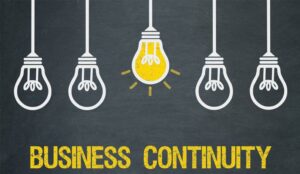Omer Minkara, on behalf of Aspect Software, discusses how you can ensure business continuity in your contact centre.
“The art of knowing is knowing what to ignore” was once said by the prolific poet Rumi. That applies to many things in life and business.
To follow the same path as Rumi — at least in a business sense — contact centre leaders must have a plan that enables them to rapidly respond and adapt to change.
These leaders are managing a complex set of activities. They must know what to ignore and what to address in order to meet customer demands when facing disrupting events such as hurricanes, earthquakes, and pandemics — which levers to pull and when to manage the uncertainty brought on by these changes.
Business Continuity in the Contact Centre
In a May 2020 study, Aberdeen Group defines business continuity as the ability to weather sudden changes impacting contact centre and broader business activities.
The most recent and relevant example of such sudden changes impacting organizations is the COVID-19 pandemic.
For example, healthcare and government organizations observed a surge in customer demand for service while retailers, airlines and hospitality firms saw a significant drop in demand due to related lockdown measures.
Our recent study revealed that large contact centres with business continuity (BC) plans fare far better in navigating changes such as COVID-19, compared to firms without BC plans.
Aberdeen’s research shows that when large contact centres incorporate BC plans within their activities, they enjoy results such as:
- 10.0% annual increase in customer satisfaction rates
- 9.6% annual growth in agent productivity
- 4.9% annual improvement (decrease) in average handle times. In other words, having a BC plan allows contact centres to transform a time of uncertainty and change into a time of opportunity, one which fosters more fruitful customer relationships, drives efficiency gains, and reduces costs.
To uncover how large contact centres enjoy such results, we compared the adoption of key activities deployed by firms with BC plans versus those without them.
There are five categories of activities firms in the former group incorporate within their activities:
- Use cloud technology effectively: The capabilities in this category allow contact centres to rapidly adjust their activities to changing customer demand. They also enable firms to take advantage of key benefits of cloud technology such as scalability and more flexibility with costs while using a hybrid model that allows on-premises customer data storage.
- Incorporate automation & proactive communications to CX activities: The capabilities in this category enable firms to better absorb any sudden surge in demand by using automation capabilities that enable customer interaction with chat bots and intelligent virtual assistants (IVAs). They also provide clients with proactive alerts, reminders, and notices so they know that the company is aware of certain issues.
- Exploit self-service to balance customer demand with available resources: The capabilities in this category allow contact centre leaders to utilize the wide array of self-service capabilities, from chat bots and IVAs to web self-service and IVR to provide customers the ability to address simple issues themselves.
- Empower your agents: The capabilities in this category are designed to boost agent productivity and engagement by providing agents the tools and information they need to do their jobs. In turn, they help firms effectively manage agent-assisted conversations. These capabilities also help firms retain top performing agents by improving their overall engagement levels.
- Minimize uncertainty through close tracking & managing of performance results: The capabilities in this category help contact centres ensure that activities involved in their BC plan address the effects of any disrupting events. Specifically, these capabilities help reveal any inefficiencies and uncover opportunities for firms to make adjustments in real-time to achieve desired results.
While the above capabilities provide the foundation contact centres need to ensure business continuity, it’s also important to have a strategy that utilizes each of these capabilities effectively.
For that, we suggest that when you encounter a disrupting event, you first determine its scope and impact. Include all relevant stakeholders in this stage to ensure a comprehensive and accurate assessment of how the change may impact the business.
Once you have a comprehensive assessment of how an event may impact your business, you must then craft an initial response strategy to mitigate the negative impacts any unexpected change may have on your business. These plans must identify both short-term responses and long-term activities.
To truly turn change into opportunity, once you manage the short-term effects of change, you must then implement your long-term plan.
When doing so, don’t forget to reevaluate your initial long-term plan by monitoring how market conditions have changed, if at all, since then.
Despite the complexity of their activities, uncertainty and change no longer become existential threats for large contact centres when they follow the above process and implement the five building blocks noted.
Register for the Webinar – 5 Building Blocks to Ensure Business Continuity in the Contact Centre Amid Economic Uncertainty
This blog post has been re-published by kind permission of Alvaria – View the Original Article
For more information about Alvaria - visit the Alvaria Website
Call Centre Helper is not responsible for the content of these guest blog posts. The opinions expressed in this article are those of the author, and do not necessarily reflect those of Call Centre Helper.
Author: Alvaria
Published On: 8th Jun 2020 - Last modified: 12th Jun 2020
Read more about - Guest Blogs, Alvaria






 Alvaria was founded through the merger of Aspect Software and Noble Systems, technology leaders in Customer Experience (CX) and Workforce Engagement solutions
Alvaria was founded through the merger of Aspect Software and Noble Systems, technology leaders in Customer Experience (CX) and Workforce Engagement solutions 








